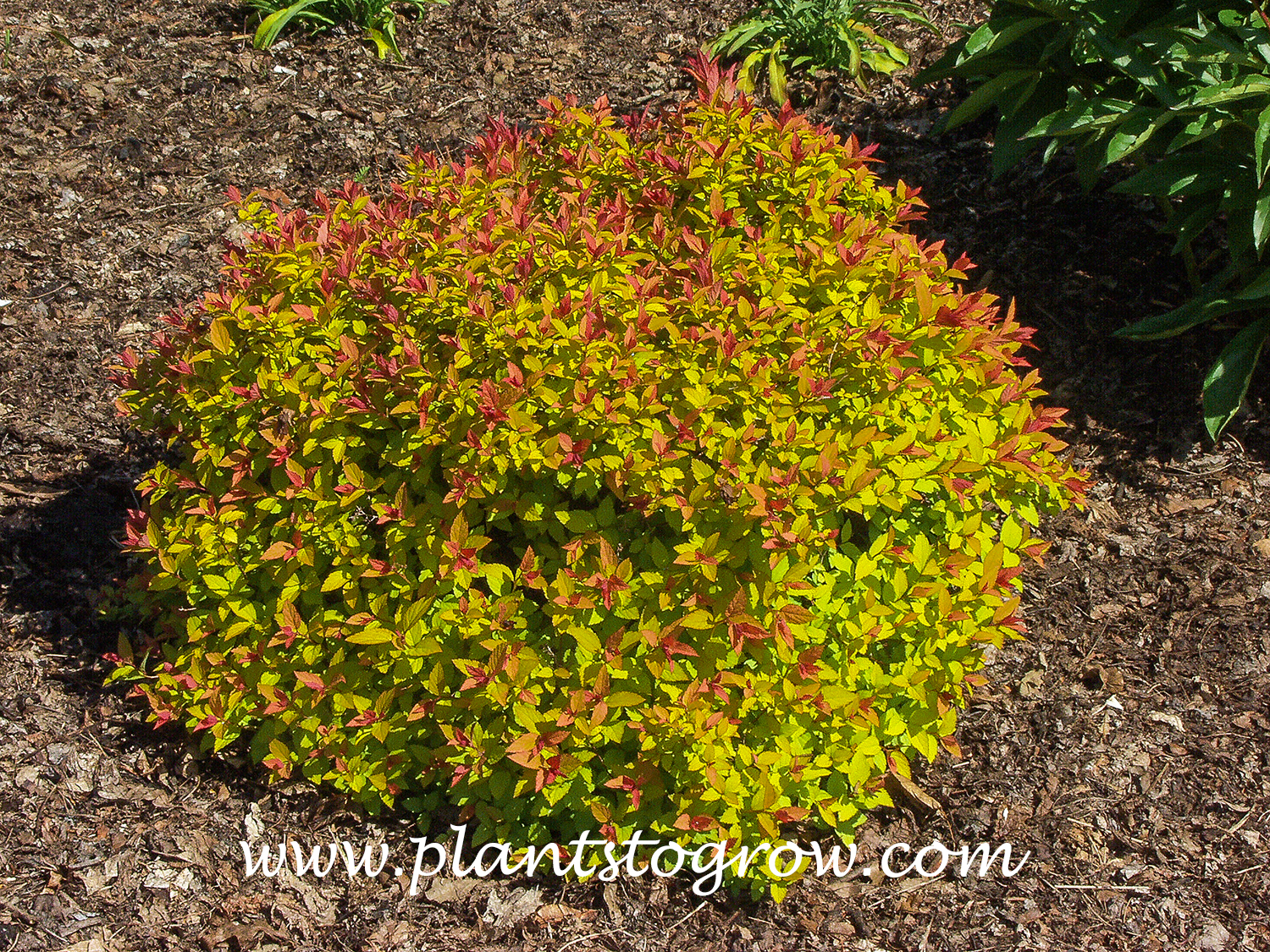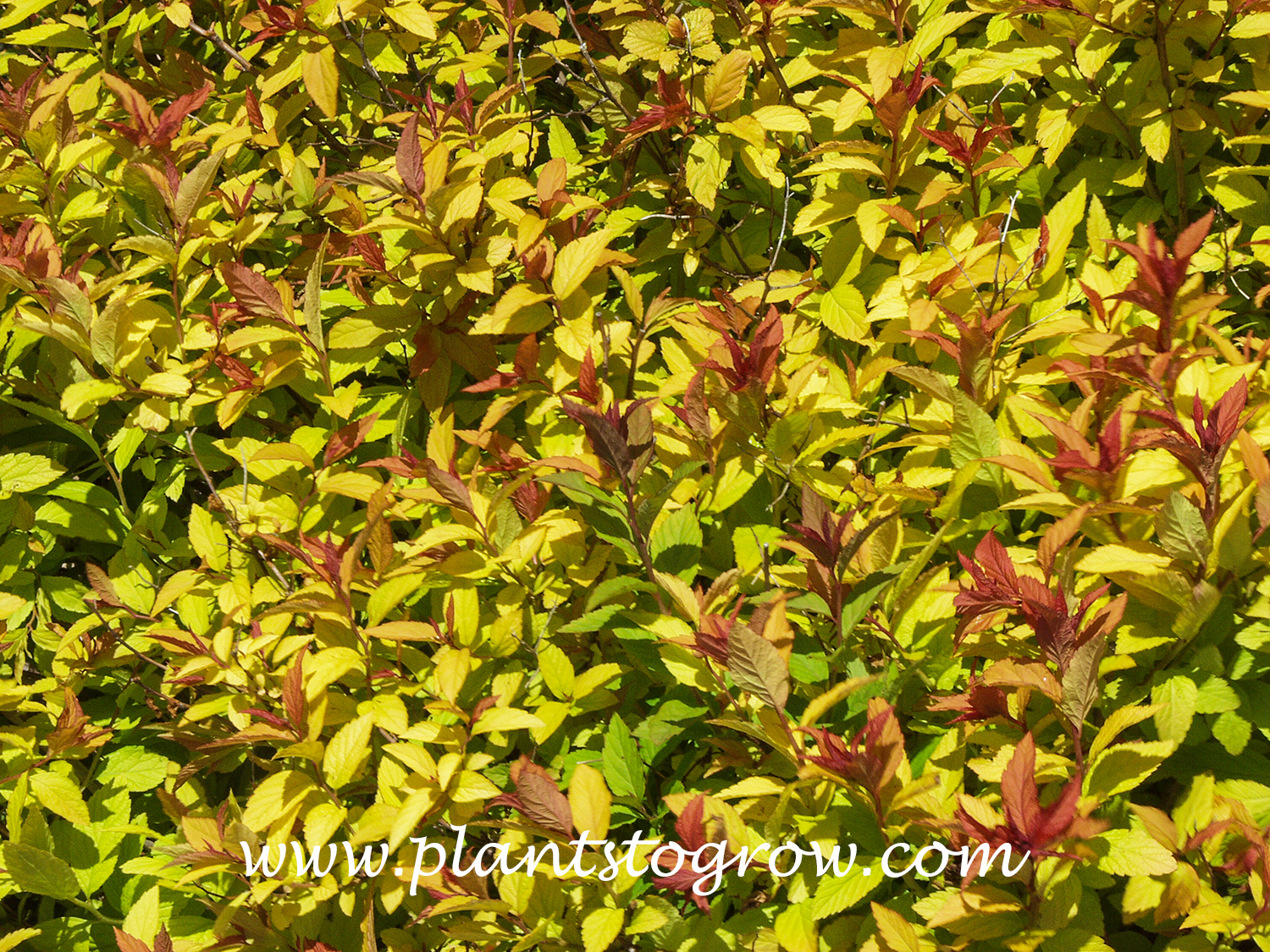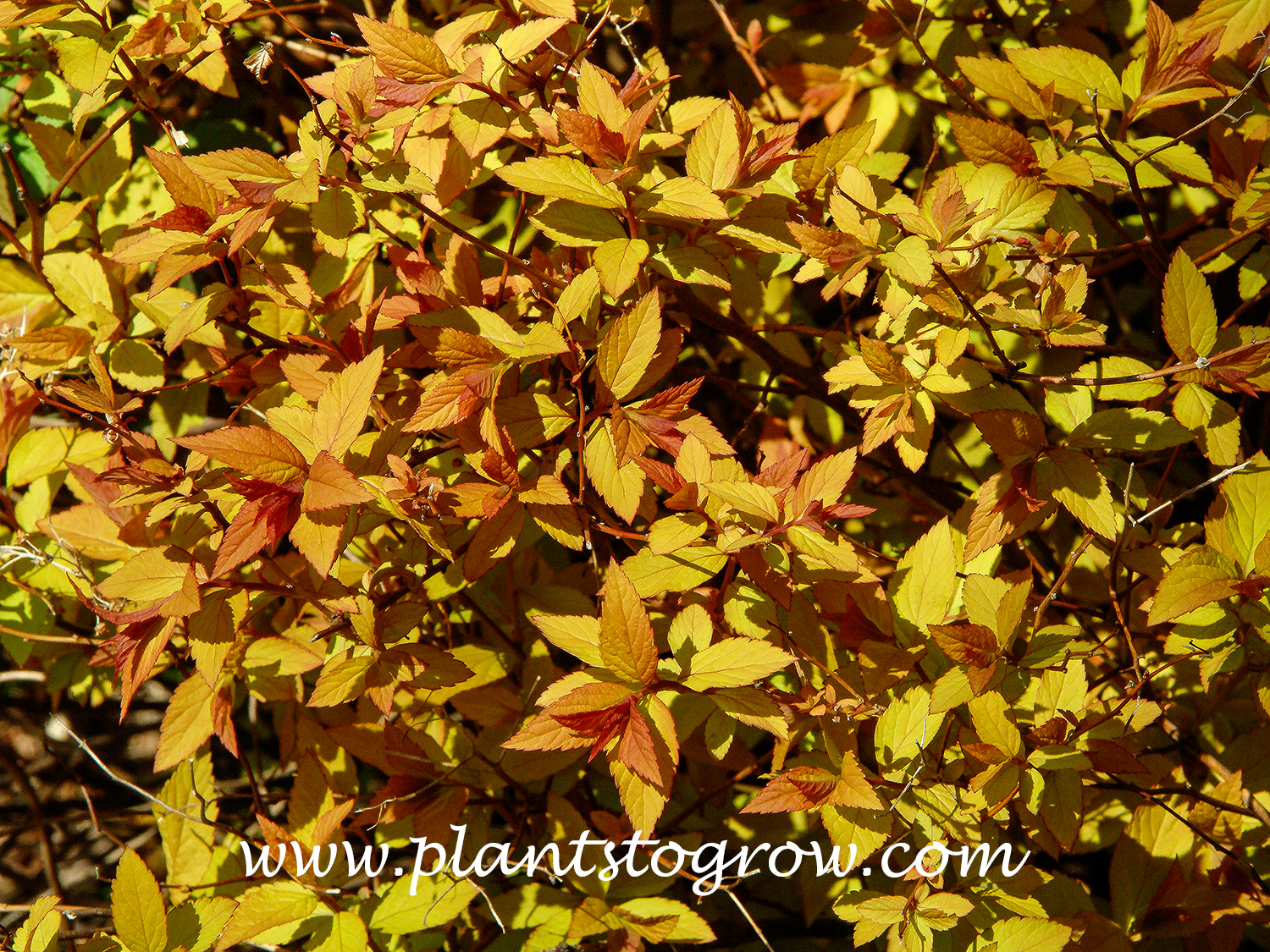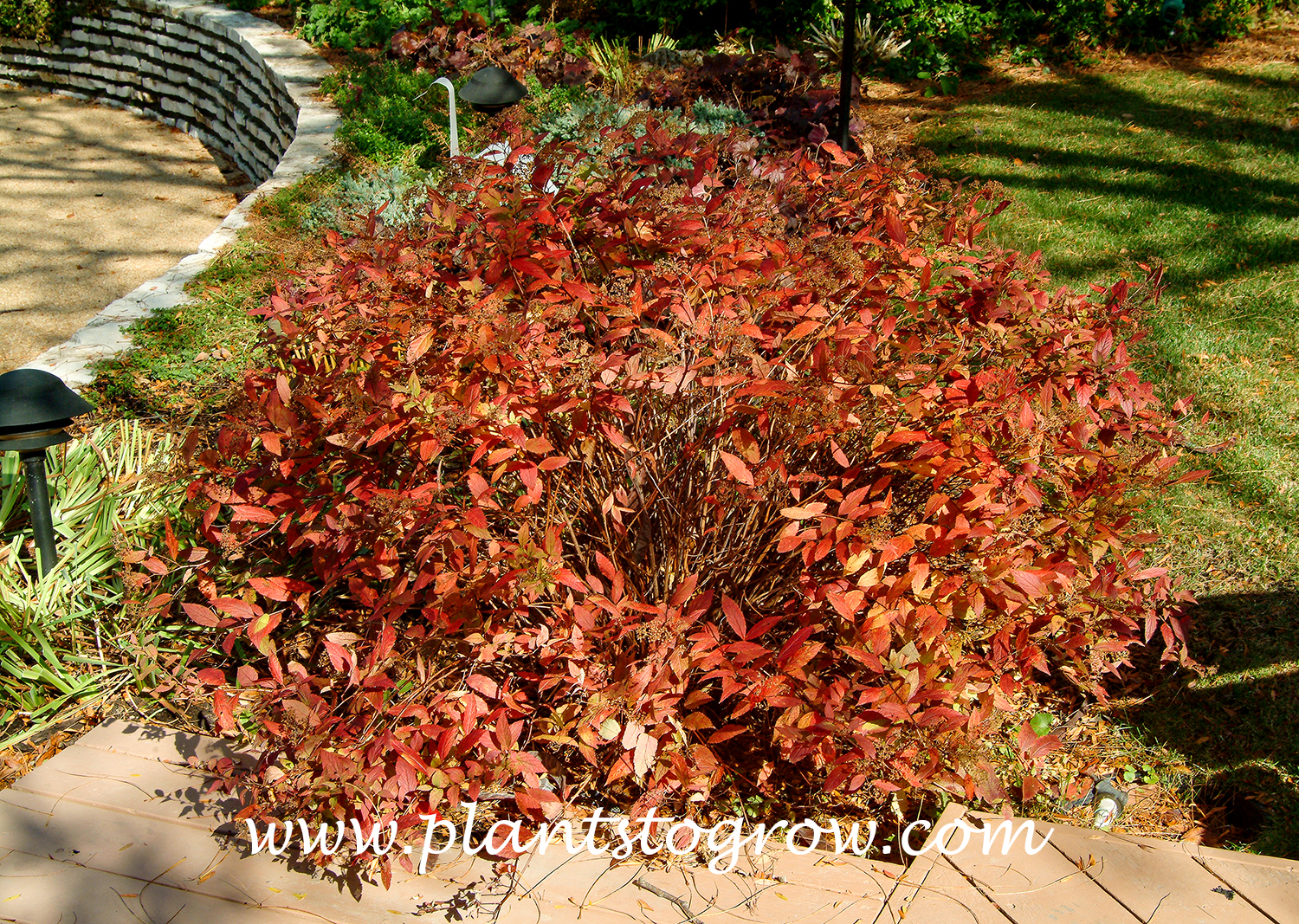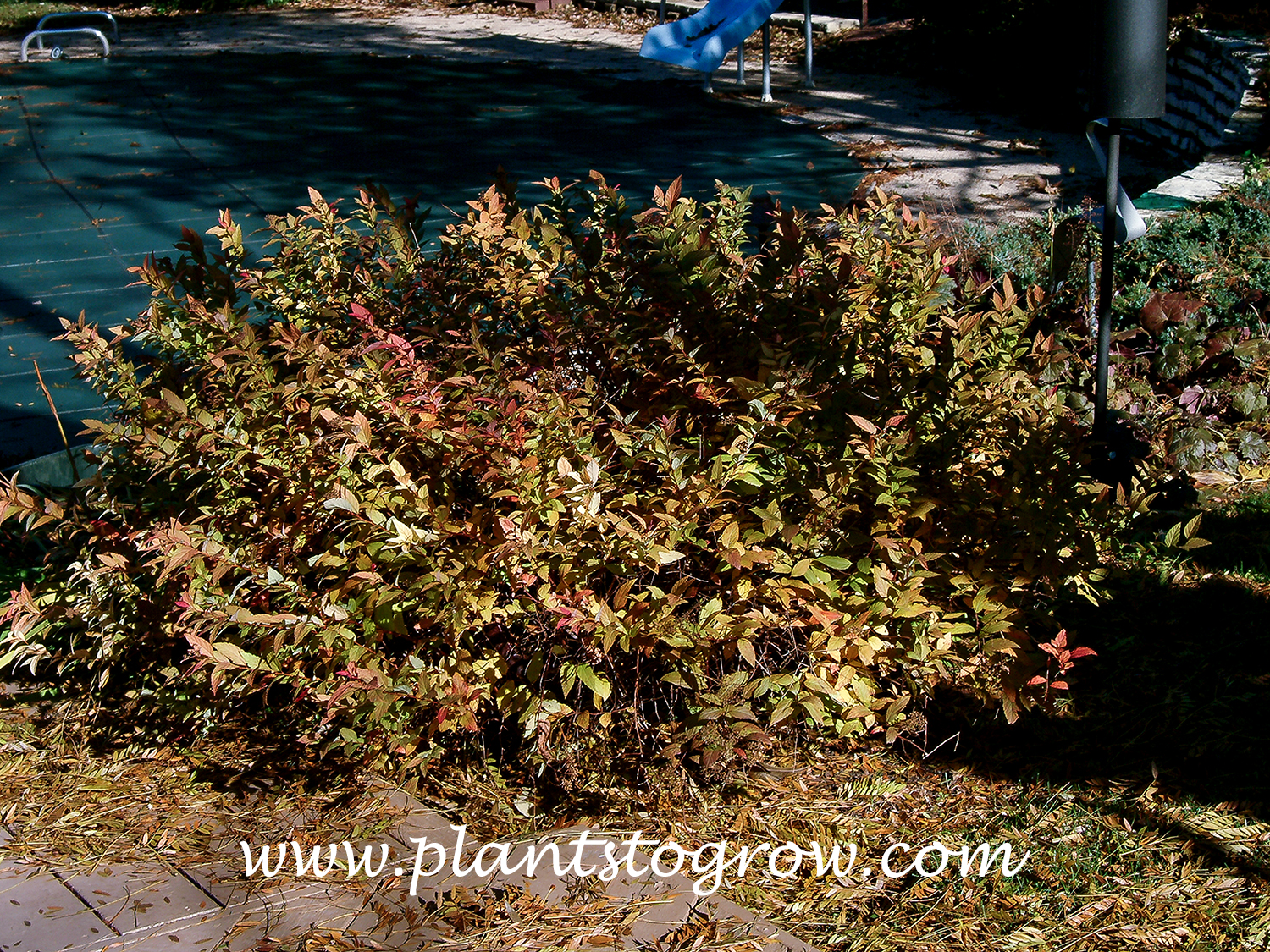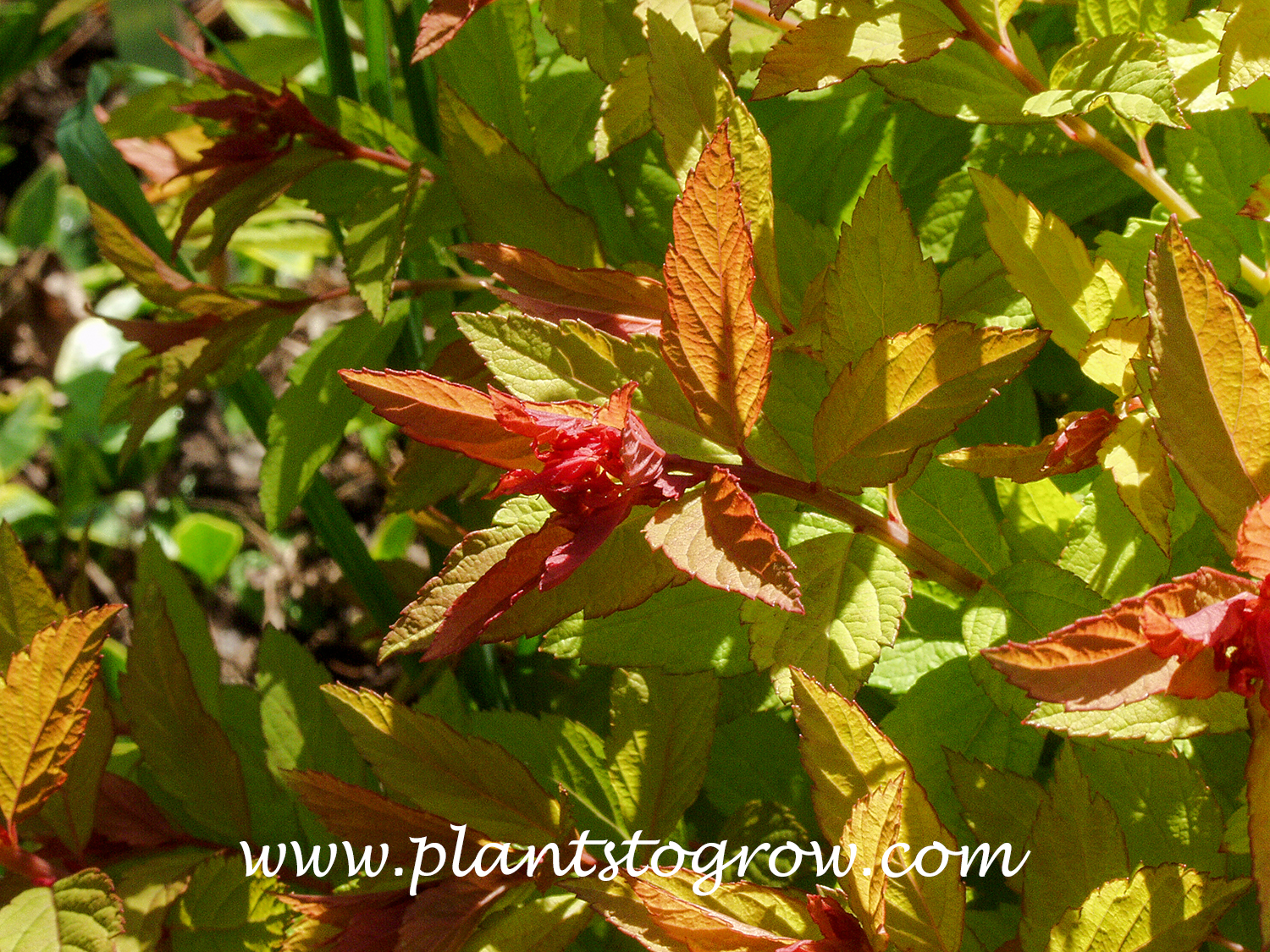| Description | Gold Flame Spirea (Spiraea japonica) is a hardy, small shrub at its best in the spring and fall. During this time of the year, it lives up to its name, "Gold Flame." It probably has been superseded by other newer gold leaf cultivars. |
|---|---|
| Pronunciation | (spy-REE-ah) |
| Plant Type | Shrubs Deciduous, Site author's observations |
| Hardiness Zone | 3-8 |
| Sunlight | best in full |
| Moisture | average |
| Soil & Site | average |
| Flowers | The flat-topped pinkish flowers bloom in early June, but their luster diminishes because the foliage is light yellow-green during this time. |
| Leaves | In spring and fall, the foliage displays red, copper, orange, and yellow colors. In summer, it appears light green. The plant has small serrated leaves and is among the first to leaf out. |
| Stems | very twiggy |
| Dimensions | Reaches 3-4 feet high by 3-4 feet in spread. Space 3-4 feet on center. |
| Maintenance | Most of the Spirea x bumalda and japonica groups need to be pruned every 1 to 3 years. If not pruned, they can become scraggly, and flower production will decrease. There are two effective methods for pruning these shrubs. The first method involves cutting the shrub back to just a few inches above the ground. This straightforward approach allows the plant to quickly recover with fresh, new growth, but it does delay flowering since the shrub has to regrow completely. The second method uses pruning shears to cut the shrub back by about 50%, shaping it to resemble its natural form while removing any old, gnarly stems. This method does not delay flowering as much as the first one, and the earlier it is done in the spring, the sooner the plant will bloom |
| Propagation | Root from cuttings. Small plants can be found around the edge from the branches layering. |
| Author's Notes | This plant is often overused, but it still has merit due to its spring and fall foliage. In the summer, it loses some appeal because of its yellow-green leaves. I have used many of these in my landscaping, but I have since switched to Goldmound Spirea. It is very similar but more compact and offers better foliage color. |
| Notes & Reference | #01-Manual of Woody Landscape Plants, #274-Site Authors' observations and growing experiences of using this plant |

Cart
